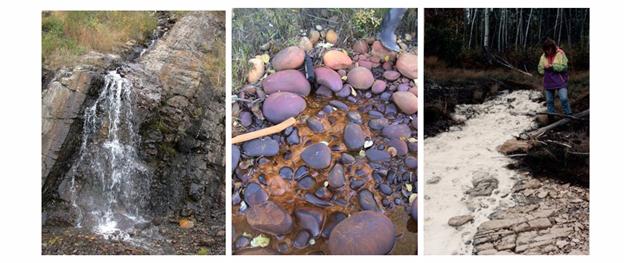What are Springs?
Springs are part of the water cycle. When water falls as precipitation it seeps into the ground and, over time, it makes its way into permeable layers of rock, sand, and gravel. These layers are called aquifers and they allow the water to flow through them at different rates which depend on the layer’s permeability. Springs occur in areas where an aquifer is filled to the point that groundwater overflows onto the land surface and creates visible flow. We see springs at the land surface (sometimes referred to as a groundwater outcrop) or underwater. Springs at the land surface are seen on cliff faces, hillsides, riverbanks, or along road cuts, and underwater springs occur beneath a lake or river.

Alberta Springs
Springs play a critical role in understanding hydrogeology and the quality of groundwater in aquifers, which many Albertans rely on for water. Over the past 100 years, we have intermittently researched and documented information about Alberta’s springs beginning with Dr. John Allan’s search for economic minerals in the 1920’s. Our knowledge of the relationship between groundwater and springs grew with Dr. Jóseph Tóth’s landmark hydrogeological papers in the 1960’s, the technological advances with computing and databases in the 1990’s, the introduction of mapping using geographic information systems (GIS) in the 2000’s, and finally with remote sensing applications in the past decade.

Common Types of Springs
Not all springs are created equal. They can be hot or cold, small or large, seasonal or perennial, salty or fresh. There are many types of springs. Some of the more common springs in Alberta are:








